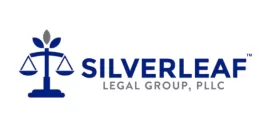I met with a client from Lakeway last month who had spent decades building a successful business. Now in his late 60s, he was thinking about his legacy. He had two primary goals: supporting his favorite environmental conservation organization and ensuring his wife would have income for life.
“I want to make a significant donation,” he told me, “but I’m worried about giving away too much too soon. Is there a way to do both?”
This is a conversation I have frequently in my Cedar Park office. Many Central Texans want to leave a meaningful legacy through charitable giving while still maintaining financial security. The good news? You don’t have to choose between these goals.
Today, I want to share one of the most powerful tools in philanthropic estate planning: charitable remainder trusts. It’s a solution that can help you build a legacy with purpose while still providing for yourself and your loved ones.
Philanthropy and Financial Security: You Can Have Both
Let’s start with a fundamental truth: Charitable giving doesn’t have to be an all-or-nothing proposition. With the right planning, you can support the causes you care about while still generating income during your lifetime.
This balance is particularly important for:
- – Retirees who want to ensure financial stability
- – Business owners looking to transition wealth
- – Investors with appreciated assets
- – Parents who want to teach philanthropy to the next generation
A charitable remainder trust (CRT) bridges these seemingly competing priorities by creating a structure that serves both your charitable intentions and your financial needs.
What Is a Charitable Remainder Trust?
Simply put, a charitable remainder trust is an irrevocable trust that generates income for you or your chosen beneficiaries for a specified period, after which the remaining assets go to one or more charities you’ve selected.
Here’s how it typically works:
- 1. You create and fund the trust with assets such as cash, stocks, real estate, or business interests.
- 2. You (or other named beneficiaries) receive income payments from the trust for either a term of years (up to 20) or for life.
- 3. When the income period ends, whatever remains in the trust passes to your designated charitable organizations.
- 4. You receive potential tax benefits, including an immediate partial income tax deduction and avoidance of capital gains tax on appreciated assets.
The structure is remarkably flexible, allowing you to customize the arrangement to suit your particular circumstances.
The Story Behind the Strategy: Why CRTs Matter
Before diving into the technical details, let me share why I find charitable remainder trusts so valuable for many of my Central Texas clients.
I worked with a couple from Round Rock who had purchased farmland decades ago for $50,000. Over the years, the area developed, and the property was now worth $1.5 million. They wanted to sell, but were facing an enormous capital gains tax bill. By transferring the property to a charitable remainder trust before the sale, they:
- – Avoided immediate capital gains tax on $1,450,000 of appreciation
- – Created a lifetime income stream from the full $1.5 million value
- – Secured a significant income tax deduction in the year of the gift
- – Ultimately supported their church’s building fund and a scholarship at their alma mater
The strategy allowed them to do more for themselves and for the causes they cared about than would have been possible otherwise.
That’s the power of charitable remainder trusts: they transform tax liabilities into financial benefits and philanthropic impact.
Two Types of Charitable Remainder Trusts: Choosing the Right Structure
When setting up a charitable remainder trust, you’ll need to choose between two primary structures. Each has distinct advantages depending on your goals.
Charitable Remainder Annuity Trust (CRAT)
The CRAT provides a fixed dollar amount of income each year, regardless of how the trust’s investments perform. This model works well for those who value predictability and want to know exactly how much they’ll receive.
Key features of a CRAT:
- – Fixed income payments that never change
- – No additional contributions allowed after initial funding
- – Minimum 5% payout rate (of initial value)
- – Particularly good for older beneficiaries who want certainty
For example, if you fund a CRAT with $500,000 and set a 5% payout rate, you’ll receive $25,000 annually for the duration of the trust term, whether the trust assets grow to $600,000 or decline to $400,000.
Charitable Remainder Unitrust (CRUT)
The CRUT provides a fixed percentage of the trust’s value, recalculated annually. This means your income can increase over time if the trust assets grow, providing a potential hedge against inflation.
Key features of a CRUT:
- – Variable income payments that fluctuate with the trust’s performance
- – Ability to make additional contributions over time
- – Minimum 5% payout rate (recalculated annually)
- – Better suited for younger beneficiaries or those concerned about inflation
Using the same example, if you fund a CRUT with $500,000 and set a 5% payout rate, your first-year distribution would be $25,000. If the trust grows to $550,000 in the second year, your distribution would increase to $27,500.
The choice between these options often comes down to your need for certainty versus growth potential. It’s one of the most important decisions we’ll make when designing your CRT strategy.
The Tax Benefits: Enhancing Your Financial Picture
One of the most attractive aspects of charitable remainder trusts is their tax efficiency. When properly structured, a CRT can provide multiple tax advantages:
1. Immediate Charitable Income Tax Deduction
When you fund a CRT, you receive a partial tax deduction based on the present value of the charity’s future interest. The exact amount depends on:
- – The type of CRT you select
- – The payout rate
- – The length of the term
- – IRS interest rates at the time of funding
For many clients, this deduction provides significant tax savings in the year they establish the trust.
2. Avoidance of Capital Gains Tax on Appreciated Assets
This benefit is particularly valuable for those with highly appreciated assets. When you transfer appreciated property to a CRT, the trust can sell it without triggering immediate capital gains tax.
I remember a client who owned tech company stock purchased for $100,000 that had grown to $1 million. By transferring the stock to a CRT before selling, she avoided approximately $180,000 in upfront capital gains tax.
3. Estate Tax Reduction
Assets placed in a charitable remainder trust are removed from your taxable estate. For individuals with estates large enough to be subject to estate tax, this can result in significant tax savings for heirs.
4. Income Stream Taxation
While the income you receive from a CRT is generally taxable, it follows a favorable “tiered” system of taxation. Income is characterized in the following order:
- – Ordinary income
- – Capital gains
- – Tax-exempt income
- – Return of principal
This ordering system can often result in more favorable tax treatment than other income sources.
Understanding these tax benefits is critical to maximizing the value of your charitable remainder trust strategy.
Important Considerations Before Creating a CRT
While charitable remainder trusts offer impressive benefits, they’re not appropriate for everyone. Here are some crucial factors to consider:
1. Irrevocable Nature
Once you establish a CRT, you cannot change your mind and take the assets back. This permanent commitment means you should only place assets in the trust that you’re certain you won’t need unrestricted access to in the future.
2. Minimum Payout Requirements
IRS regulations require CRTs to distribute at least 5% of their value annually. Additionally, there must be at least a 10% probability that something will remain for charity at the end of the term.
3. Administrative Costs
CRTs require ongoing management, annual tax filings, and possibly professional investment guidance. These costs should be considered when evaluating whether the benefits outweigh the expenses.
4. Selection of Trustees
The trustee of your CRT plays a crucial role in its success. You can serve as your own trustee, name a family member, or select a professional trustee. Each option has pros and cons regarding control, expertise, and cost.
I always encourage clients to weigh these factors carefully before proceeding with a CRT. For the right situation, the benefits far outweigh the limitations, but it’s important to enter this arrangement with eyes wide open.
When a Charitable Remainder Trust Makes Sense
Based on my experience working with Central Texas families, charitable remainder trusts tend to be most beneficial in these scenarios:
- – You own highly appreciated assets (stocks, real estate, business interests) and want to diversify without triggering immediate capital gains tax
- – You desire income for yourself or loved ones while ultimately supporting charitable causes
- – You want to reduce your taxable estate while creating a philanthropic legacy
- – You’re approaching retirement and looking for additional income sources
- – You want to sell a business or investment property in a tax-efficient manner
One client, a retired professor, used a CRT to convert a portfolio of appreciated stocks into a diversified income stream while ultimately funding a scholarship at her university. The strategy allowed her to increase her retirement income by about 30% compared to selling the stocks outright and reinvesting after taxes.
Alternative Charitable Planning Strategies
While CRTs are powerful tools, they’re not the only option for philanthropically-minded clients. Depending on your specific goals, you might also consider:
- – Charitable lead trusts, which work in reverse—providing income to charity first, with assets eventually returning to family
- – Donor-advised funds, which offer immediate tax benefits and ongoing charitable involvement with less complexity than a CRT
- – Direct bequests through your will or trust, which are simpler but don’t provide lifetime benefits
- – Qualified charitable distributions from IRAs, which can be an excellent option for those over 70½
Each approach has its place, and often the best charitable planning involves a combination of strategies tailored to your unique situation.
Taking the Next Step: Creating Your Charitable Legacy
If you’re considering a charitable remainder trust, here’s what the process typically involves:
- – Identify your goals: Clarify what you want to accomplish for yourself, your family, and your charitable interests.
- – Select appropriate assets: Determine which assets would benefit most from the tax advantages of a CRT.
- – Choose your beneficiaries: Decide who will receive income from the trust and which charities will ultimately benefit.
- – Design the trust structure: Work with an experienced attorney to create a trust document that meets IRS requirements while achieving your objectives.
- – Fund the trust: Transfer assets to the trust, either all at once or over time (for CRUTs).
- – Manage investments: Develop an investment strategy aligned with your income needs and charitable goals.
The most successful charitable remainder trusts I’ve helped establish have resulted from thoughtful planning and clear communication about priorities. They represent the perfect alignment of personal financial needs and philanthropic vision.
Conclusion: Building a Legacy That Matters
Your estate plan reflects not just what you own, but what you value. A charitable remainder trust allows you to create a lasting impact on organizations you care about while still ensuring financial security for yourself and your loved ones.
Whether you’re passionate about education, healthcare, the arts, environmental conservation, or religious organizations, a CRT can help you amplify your impact and create a legacy that extends far beyond your lifetime.

